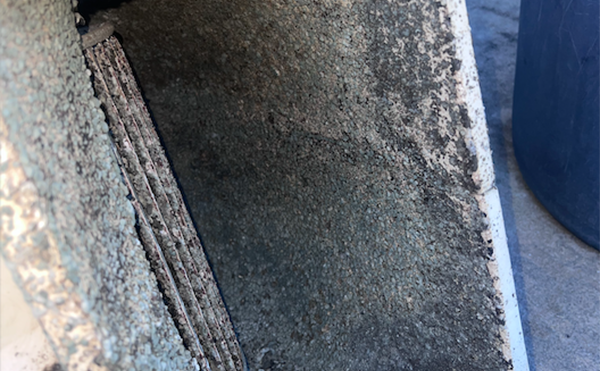What Are the Common Types of Mold in Air Ducts?
Types of mold in air ducts can severely impact your indoor air quality and health. These molds thrive in the dark, damp conditions of HVAC systems, spreading spores throughout your home or business. Recognizing and addressing these issues is essential for maintaining a clean, healthy environment.
According to the Environmental Protection Agency (EPA), exposure to mold can trigger allergic reactions, respiratory problems, and other health concerns. Understanding the types of mold in air ducts and taking proactive measures can significantly reduce these risks.
Did you know that mold can begin growing within 24 to 48 hours in ideal conditions? This rapid growth underscores the importance of addressing moisture and humidity issues promptly.
Common Types of Mold Found in Air Ducts
1. Black Mold (Stachybotrys Chartarum)
Black mold is one of the most notorious types of mold found in air ducts. It thrives in areas with consistent moisture, such as ducts with condensation or leaks. Black mold produces mycotoxins, which can cause severe health issues, including respiratory problems and fatigue.
2. White Mold
White mold is less visible but just as harmful. This type of mold grows on organic materials like insulation or dust inside air ducts. While it may appear powdery, its spores can still cause allergic reactions and respiratory irritation.
3. Aspergillus
Aspergillus is a common mold type that can grow in a wide range of conditions. In air ducts, it often appears as yellow or green patches. Aspergillus is particularly concerning because it can produce allergens and toxins, leading to health problems for sensitive individuals.
4. Cladosporium
Cladosporium is a mold that thrives in cooler environments. It often grows on duct surfaces, vents, or fiberglass insulation. While not as toxic as black mold, Cladosporium can still cause respiratory irritation and skin sensitivity.
5. Penicillium
Penicillium spreads quickly in moist environments and is known for its blue or green appearance. This type of mold in air ducts can contribute to a musty odor and may lead to allergic reactions or sinus infections.
Signs of Mold in Air Ducts
It’s important to recognize the signs of mold in your HVAC system early. Common indicators include:
- Musty Odors: Mold often produces a distinctive, unpleasant smell.
- Visible Growth: Mold patches may appear around vents or inside ducts.
- Increased Allergies: Symptoms like sneezing, coughing, or itchy eyes can indicate mold exposure.
- Humidity Issues: High indoor humidity creates ideal conditions for mold growth.
Health Risks Associated with Mold in Air Ducts
Mold exposure can lead to various health problems, particularly for individuals with pre-existing conditions. These risks include:
- Respiratory issues such as asthma or bronchitis
- Allergic reactions like sneezing and itchy eyes
- Fatigue and headaches from prolonged exposure to mold spores
Children, elderly individuals, and those with weakened immune systems are especially vulnerable to the effects of mold.
How to Prevent Mold in Air Ducts
1. Control Moisture Levels
Moisture is the primary cause of mold growth in air ducts. Use a dehumidifier to maintain indoor humidity levels between 30% and 50%. Ensure your HVAC system is free from leaks and condensation.
2. Regular Maintenance
Schedule routine HVAC inspections to catch potential mold issues early. Replace filters every 1-3 months and clean ducts as needed to prevent dust buildup.
3. Improve Ventilation
Proper ventilation helps reduce humidity and prevents mold growth. Use exhaust fans in bathrooms and kitchens, and ensure your ductwork allows for adequate airflow.
Addressing Mold Issues in Air Ducts
If you suspect mold in your air ducts, professional cleaning is the most effective solution. Certified technicians use specialized tools and cleaning agents to remove mold and prevent future growth. This process often includes:
- Inspection: Identifying the type and extent of mold growth.
- Containment: Preventing mold spores from spreading during cleaning.
- Cleaning and Sanitizing: Using antimicrobial treatments to eliminate mold.
- Post-Cleaning Testing: Ensuring that the ducts are mold-free.
Resources for More Information
- EPA: Mold Basics
- Centers for Disease Control and Prevention (CDC): Mold and Health
- National Air Duct Cleaners Association (NADCA)
Final Thoughts
Understanding the types of mold in air ducts and addressing them promptly can protect your health and improve indoor air quality. Regular maintenance, moisture control, and professional cleaning services are essential for preventing mold growth.
If you notice any signs of mold in your HVAC system, don’t wait to take action. Reach out to a professional service for a thorough inspection and cleaning. Protect your home or business by ensuring your air ducts remain clean and mold-free.



